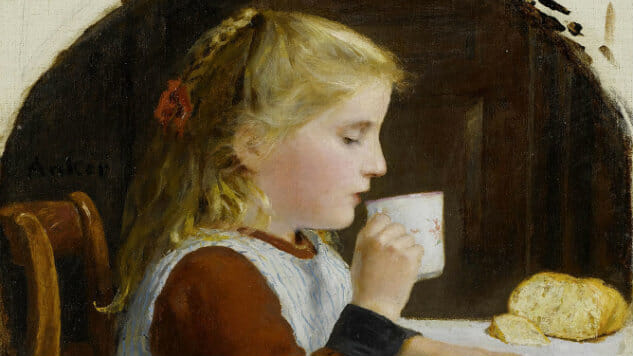15 Paintings of Coffee Lovers for National Coffee Day

To celebrate National Coffee Day, we’ve curated fifteen paintings of coffee-drinkers by well-known artists in Europe during the years of the Age of Enlightenment through the end of the First World War. It just goes to show you – we’re far from alone throughout time with our coffee love.
“Boy Brings His Father a Cup of Coffee”
Roelof Loets, Dutch
1654

Roelof Koets (II) [Public domain], via Wikimedia Commons
“The Turks have a drink of black color … I will bring some with me … to the Italians,” a Venetian merchant wrote in 1615, according to National Geographic. After the Venetian merchant brought coffee to Europe, the Dutch brought the first coffee plant to Europe in 1616. 1696 saw the creation of a European-owned coffee estate in Java, Indonesia. In this unexpected vignette of domestic life, Dutch painter Roelof Loets offers insight into the daily life of the time as a sleepy little boy demonstrates his filial devotion in carrying a cup of coffee to his proud father.
“Women Drinking Coffee”
Leonard Defrance, Flemish
1763

Léonard Defrance [Public domain], via Wikimedia Commons
The woman at the front of this painting is drinking coffee from a saucer, a method often used to cool freshly brewed hot beverages to a drinkable temperature.
“Farmhouse Activities”
Gottfried Mind, Swiss
1814

Gottfried Mind [Public domain], via Wikimedia Commons
Though coffee was first a drink for the wealthy, times have changed by 1814 as the cat and dog in this painting keep their mistress company as she enjoys her coffee in humble circumstances.
“Portrait of Nephew”
Maksymilian Antoni Piotrowski, Polish
1837
-

-

-

-

-

-

-

-

-

-

-

-

-

-

-

-

-

-

-

-

-

-

-

-

-

-

-

-

-

-

-

-

-

-

-

-

-

-

-

-




















































